1. Bukavina L, Bensalah K, Bray F, Carlo M, Challacombe B, Karam JA, et al. Epidemiology of renal cell carcinoma: 2022 update. Eur Urol. 2022; 82(5):529–542. PMID:
36100483.
2. Richman DM, Tirumani SH, Hornick JL, Fuchs CS, Howard S, Krajewski K, et al. Beyond gastric adenocarcinoma: multimodality assessment of common and uncommon gastric neoplasms. Abdom Radiol (NY). 2017; 42(1):124–140. PMID:
27645897.
3. Frees SK, Kamal MM, Nestler S, Levien PM, Bidnur S, Brenner W, et al. Risk-adjusted proposal for >60 months follow up after surgical treatment of organ-confined renal cell carcinoma according to life expectancy. Int J Urol. 2019; 26(3):385–390. PMID:
30588677.
4. Zisman A, Pantuck AJ, Wieder J, Chao DH, Dorey F, Said JW, et al. Risk group assessment and clinical outcome algorithm to predict the natural history of patients with surgically resected renal cell carcinoma. J Clin Oncol. 2002; 20(23):4559–4566. PMID:
12454113.
5. Patard JJ, Kim HL, Lam JS, Dorey FJ, Pantuck AJ, Zisman A, et al. Use of the University of California Los Angeles integrated staging system to predict survival in renal cell carcinoma: an international multicenter study. J Clin Oncol. 2004; 22(16):3316–3322. PMID:
15310775.
6. Leibovich BC, Blute ML, Cheville JC, Lohse CM, Frank I, Kwon ED, et al. Prediction of progression after radical nephrectomy for patients with clear cell renal cell carcinoma: a stratification tool for prospective clinical trials. Cancer. 2003; 97(7):1663–1671. PMID:
12655523.
7. Klatte T, Gallagher KM, Afferi L, Volpe A, Kroeger N, Ribback S, et al. The VENUSS prognostic model to predict disease recurrence following surgery for non-metastatic papillary renal cell carcinoma: development and evaluation using the ASSURE prospective clinical trial cohort. BMC Med. 2019; 17(1):182. PMID:
31578141.
8. Erdem S, Capitanio U, Campi R, Mir MC, Roussel E, Pavan N, et al. External validation of the VENUSS prognostic model to predict recurrence after surgery in non-metastatic papillary renal cell carcinoma: a multi-institutional analysis. Urol Oncol. 2022; 40(5):198.e9–198.17.
9. Buti S, Puligandla M, Bersanelli M, DiPaola RS, Manola J, Taguchi S, et al. Validation of a new prognostic model to easily predict outcome in renal cell carcinoma: the GRANT score applied to the ASSURE trial population. Ann Oncol. 2017; 28(11):2747–2753. PMID:
28945839.
10. Gul A, Rini BI. Adjuvant therapy in renal cell carcinoma. Cancer. 2019; 125(17):2935–2944. PMID:
31225907.
11. Byun SS, Hong SK, Lee S, Kook HR, Lee E, Kim HH, et al. The establishment of KORCC (KOrean Renal Cell Carcinoma) database. Investig Clin Urol. 2016; 57(1):50–57.
12. Kim JK, Kim SH, Song MK, Joo J, Seo SI, Kwak C, et al. Survival and clinical prognostic factors in metastatic non-clear cell renal cell carcinoma treated with targeted therapy: a multi-institutional, retrospective study using the Korean metastatic renal cell carcinoma registry. Cancer Med. 2019; 8(7):3401–3410. PMID:
31070307.
13. Kang HW, Seo SP, Kim WT, Yun SJ, Lee SC, Kim WJ, et al. Impact of young age at diagnosis on survival in patients with surgically treated renal cell carcinoma: a multicenter study. J Korean Med Sci. 2016; 31(12):1976–1982. PMID:
27822938.
14. Kim SH, Park B, Hwang EC, Hong SH, Jeong CW, Kwak C, et al. A retrospective, multicenter, long-term follow-up analysis of the prognostic characteristics of recurring non-metastatic renal cell carcinoma after partial or radical nephrectomy. Front Oncol. 2021; 11:653002. PMID:
34262859.
15. Mouracade P, Kara O, Maurice MJ, Dagenais J, Malkoc E, Nelson RJ, et al. Patterns and predictors of recurrence after partial nephrectomy for kidney tumors. J Urol. 2017; 197(6):1403–1409. PMID:
27993666.
16. Sorbellini M, Kattan MW, Snyder ME, Reuter V, Motzer R, Goetzl M, et al. A postoperative prognostic nomogram predicting recurrence for patients with conventional clear cell renal cell carcinoma. J Urol. 2005; 173(1):48–51. PMID:
15592023.
17. Frank I, Blute ML, Cheville JC, Lohse CM, Weaver AL, Zincke H. An outcome prediction model for patients with clear cell renal cell carcinoma treated with radical nephrectomy based on tumor stage, size, grade and necrosis: the SSIGN score. J Urol. 2002; 168(6):2395–2400. PMID:
12441925.
18. Donin NM, Pantuck A, Klöpfer P, Bevan P, Fall B, Said J, et al. Body mass index and survival in a prospective randomized trial of localized high-risk renal cell carcinoma. Cancer Epidemiol Biomarkers Prev. 2016; 25(9):1326–1332. PMID:
27418270.
19. Albiges L, Hakimi AA, Xie W, McKay RR, Simantov R, Lin X, et al. Body mass index and metastatic renal cell carcinoma: clinical and biological correlations. J Clin Oncol. 2016; 34(30):3655–3663. PMID:
27601543.
20. Hakimi AA, Furberg H, Zabor EC, Jacobsen A, Schultz N, Ciriello G, et al. An epidemiologic and genomic investigation into the obesity paradox in renal cell carcinoma. J Natl Cancer Inst. 2013; 105(24):1862–1870. PMID:
24285872.
21. Choi Y, Park B, Jeong BC, Seo SI, Jeon SS, Choi HY, et al. Body mass index and survival in patients with renal cell carcinoma: a clinical-based cohort and meta-analysis. Int J Cancer. 2013; 132(3):625–634. PMID:
22610826.
22. Sanchez A, Furberg H, Kuo F, Vuong L, Ged Y, Patil S, et al. Transcriptomic signatures related to the obesity paradox in patients with clear cell renal cell carcinoma: a cohort study. Lancet Oncol. 2020; 21(2):283–293. PMID:
31870811.
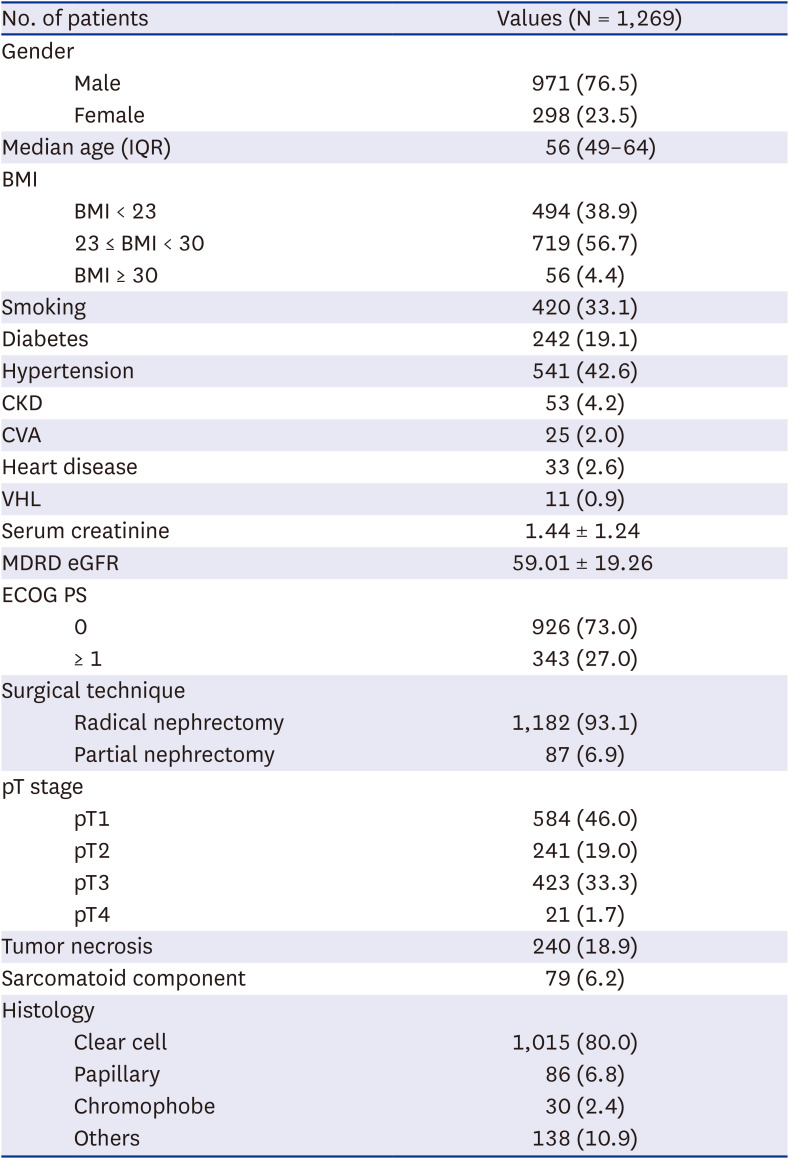
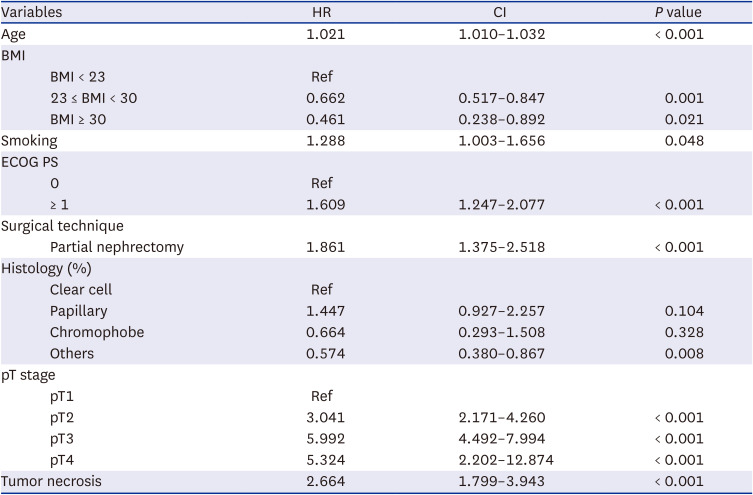
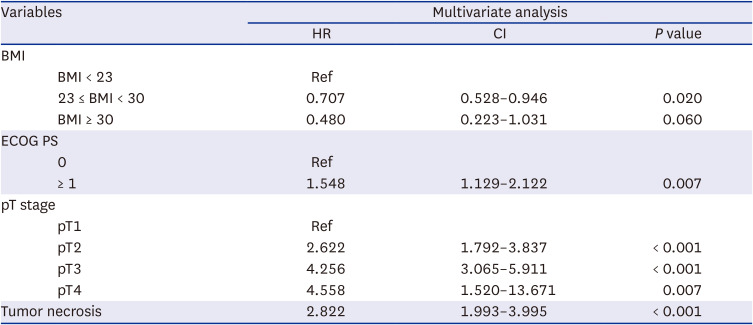




 PDF
PDF Citation
Citation Print
Print



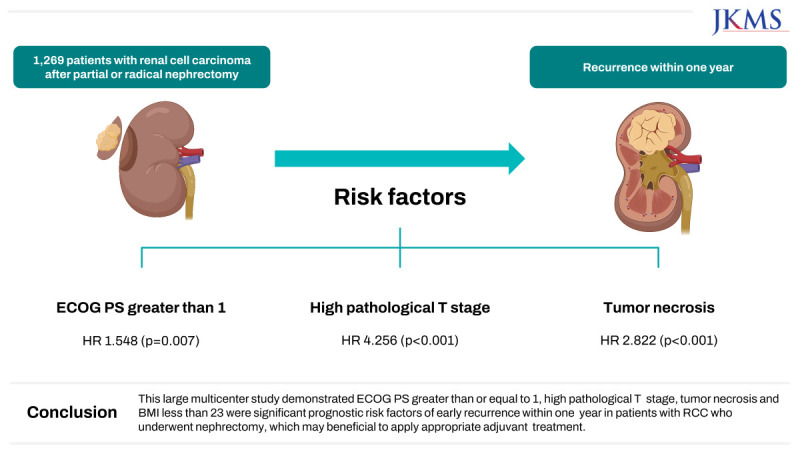

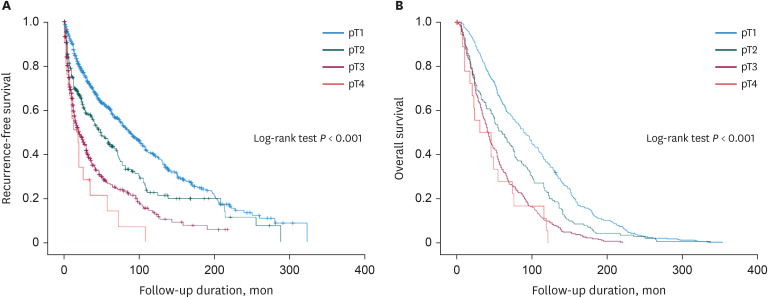
 XML Download
XML Download